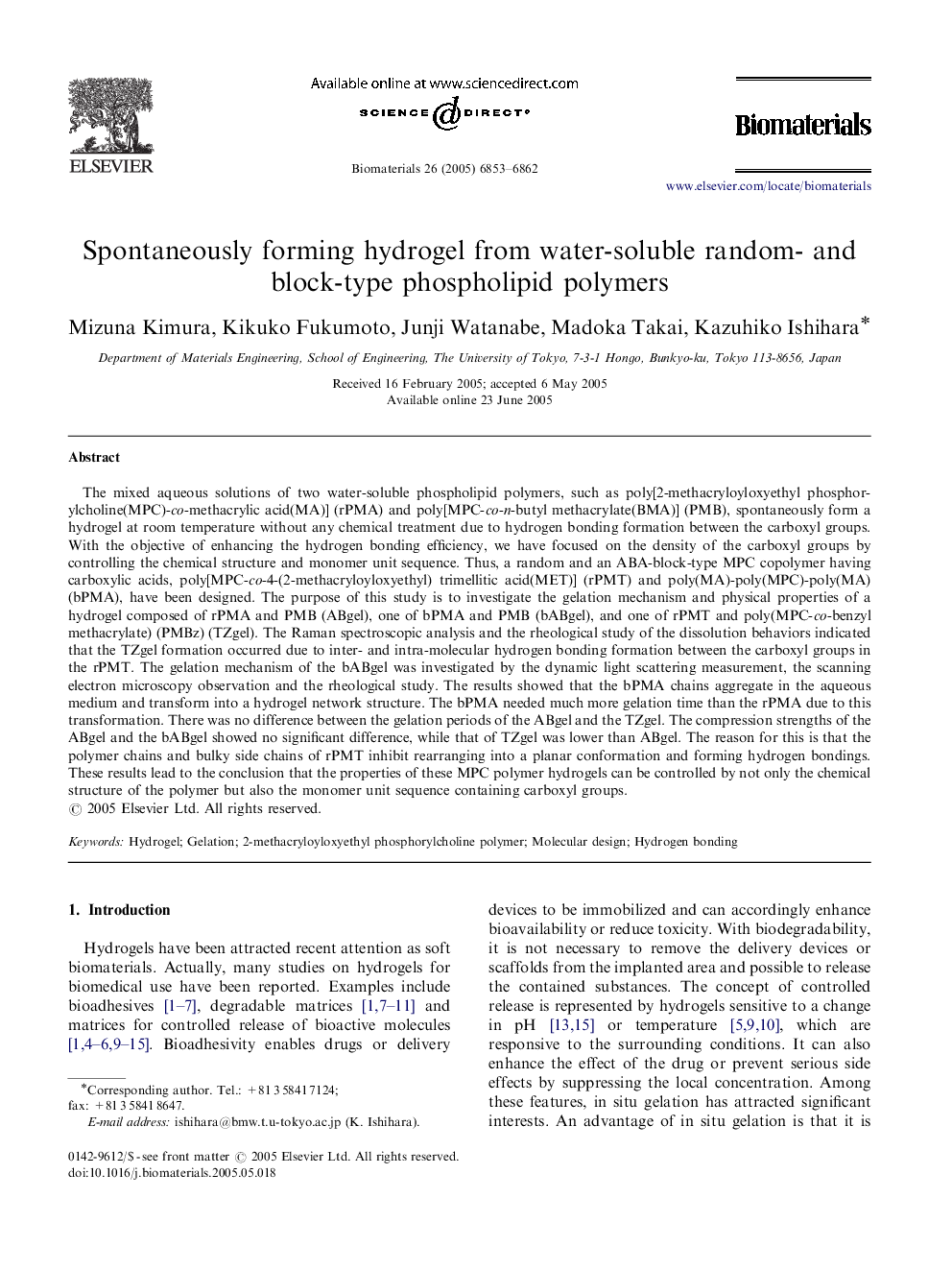| کد مقاله | کد نشریه | سال انتشار | مقاله انگلیسی | نسخه تمام متن |
|---|---|---|---|---|
| 12442 | 793 | 2005 | 10 صفحه PDF | دانلود رایگان |

The mixed aqueous solutions of two water-soluble phospholipid polymers, such as poly[2-methacryloyloxyethyl phosphorylcholine(MPC)-co-methacrylic acid(MA)] (rPMA) and poly[MPC-co-n-butyl methacrylate(BMA)] (PMB), spontaneously form a hydrogel at room temperature without any chemical treatment due to hydrogen bonding formation between the carboxyl groups. With the objective of enhancing the hydrogen bonding efficiency, we have focused on the density of the carboxyl groups by controlling the chemical structure and monomer unit sequence. Thus, a random and an ABA-block-type MPC copolymer having carboxylic acids, poly[MPC-co-4-(2-methacryloyloxyethyl) trimellitic acid(MET)] (rPMT) and poly(MA)-poly(MPC)-poly(MA) (bPMA), have been designed. The purpose of this study is to investigate the gelation mechanism and physical properties of a hydrogel composed of rPMA and PMB (ABgel), one of bPMA and PMB (bABgel), and one of rPMT and poly(MPC-co-benzyl methacrylate) (PMBz) (TZgel). The Raman spectroscopic analysis and the rheological study of the dissolution behaviors indicated that the TZgel formation occurred due to inter- and intra-molecular hydrogen bonding formation between the carboxyl groups in the rPMT. The gelation mechanism of the bABgel was investigated by the dynamic light scattering measurement, the scanning electron microscopy observation and the rheological study. The results showed that the bPMA chains aggregate in the aqueous medium and transform into a hydrogel network structure. The bPMA needed much more gelation time than the rPMA due to this transformation. There was no difference between the gelation periods of the ABgel and the TZgel. The compression strengths of the ABgel and the bABgel showed no significant difference, while that of TZgel was lower than ABgel. The reason for this is that the polymer chains and bulky side chains of rPMT inhibit rearranging into a planar conformation and forming hydrogen bondings. These results lead to the conclusion that the properties of these MPC polymer hydrogels can be controlled by not only the chemical structure of the polymer but also the monomer unit sequence containing carboxyl groups.
Journal: Biomaterials - Volume 26, Issue 34, December 2005, Pages 6853–6862